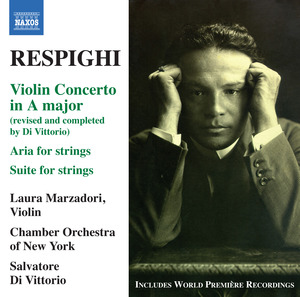Trittico Botticelliano Program Notes Haydn
Program Notes. Trittico Boticelliano. Although Respighi is best known for his glittering, even garish, suites of tone poems for large orchestra, many feel that some of his best work may be found in his more restrained and modestly scaled efforts. One such example is the Trittico Botticelliano (Three BotticeW. The set of best practices that become part of the School's curriculum for our chamber music program. Trittico botticelliano. La primavera. L'adorazione dei Magi. La nascita di Venere. 3 (“The Camp Meeting”). Old Folks Gatherin'. The references to Mahler so far in this note may be. PROGRAM NOTES Notes by David R. RESPIGHI Adoration of the Magi from Trittico Botticelliano RAVEL Tzigane. Old Wine in New Bottles (February 17, 2014).

Trittico Botticelliano Igor Stravinsky: Petrouchka (1947 Version) Program Notes. Star-Spangled Banner Franz Joseph Haydn. Onyx X10 Crack. Opus 39 Program Notes. Uyirai Tholaithen Song Free Download Starmusiq here.
Ottorino Respighi (1879-1936) The bright, evocative orchestral works of Ottorino Respighi bear his eclectic style of mixing old and new music, painted in rich colors yet rarely dense in texture. A quick survey of the titles of his works reveals his propensity for evoking specific experiences or visual images from places for which he had a particular attachment, such as with his famous Fontane Romane (1915-16), Pini di Roma (1923-24), and Feste Romane (1928). Growing up, Respighi pursued both performance and composition, entering the Liceo Musicale di Bologna in 1891 at age twelve. He moved to St.
Petersburg in 1900 to study with Rimsky-Korsakov while playing viola in the orchestra of the St. Petersburg opera, and later studied with Max Bruch in Berlin in 1902. It was his time with Rimsky-Korsakov, however, which proved most influential for Respighi, and the lessons imparted to him on color and orchestration would show themselves as defining characteristics in his work throughout his career. Respighi returned to Italy in 1903 and eventually took up a post at the Accademia di Santa Cecilia in Rome—first as composition professor in 1913, then as director in 1924. He resigned in 1926 to devote time to composing, conducting, and accompanying his wife, singer Elsa Respighi, on her performance tours. According to Elsa Respighi, who became her husband’s biographer, the composer was impressed by the generous patronage of Elizabeth Sprague Coolidge during a United States tour in 1927.
He vowed he would dedicate his next piece to her, and began working on it immediately upon their return to Rome. The resulting Trittico Botticelliano premiered at a concert sponsored by Mrs.
Coolidge in Vienna in October that same year. Given Respighi’s reverence for the past and his affinity for translating the visual into music, it is not surprising that he should have turned to the famous quattrocento master Sandro Botticelli for inspiration.
Respighi’s Trittico Botticelliano takes as its subjects three masterpieces that hang in the Galleria degli Uffizi in Florence: La Primavera (1482), L’adorazione dei Magi (1475), and La Nascita di Venere (1486). The fifteenth century Renaissance artist’s work is rich in color and in detail, elements that Respighi brought into his musical interpretation of the paintings. The small ensemble for the piece includes strings, winds and horn, which evoke colors of brilliance, ancient mysticism, and the pastoral. A percussion section adds color with triangle, piano, celesta and harp. Botticelli’s La Primavera is an allegorical depiction of the arrival of spring in a forest scene. The verdant grove provides a darker backdrop to the wispy, translucent clothing of the Three Graces dancing to one side, or the floral printed garment of Spring herself scattering flowers on the ground.
Zephyr, Mars and Venus are among the characters who take part in this scene full of activity, with details to pull our attention in every direction. Respighi creates an equally sumptuous feast for the ears: a bright and shimmering opening gives way to rustic horn calls and spritely, bounding dance melodies. A slower and softer central section, perhaps denoting the more stately procession of the entrance of Spring, grows through joyful trills and chirps, and the listener can almost see figures clad in white skipping lightly through the trees in celebration of the coming spring.